Science
New research finds how associative memories are formed
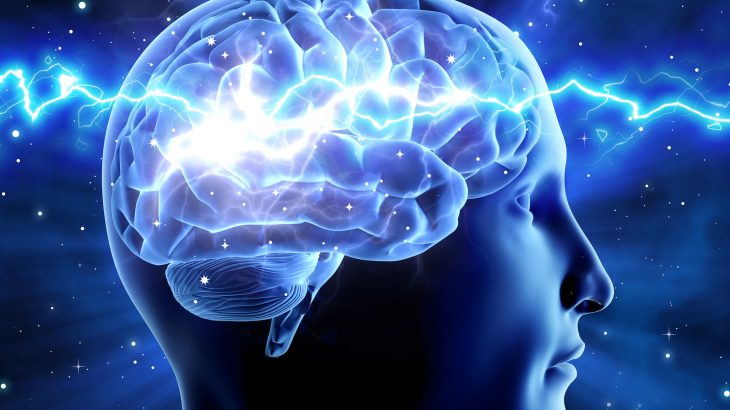
WASHINGTON, DC (ANI): The ability to remember relationships between unrelated items (an odour and a location, a song and an event) is known as associative memory. Neuroscientists at the University of California, Irvine have discovered specific types of neurons within the memory centre of the brain that are responsible for acquiring new associative memories.
The findings of the study were published in the journal ‘Nature’. Psychologists began studying associative memory in the 1800s, with William James describing the phenomenon in his 1890 classic The Principles of Psychology.
Scientists today agree that the structures responsible for the formation of associative memory are found in the medial temporal lobe, or the famous “memory centre” of the brain, but the particular cells involved, and how those cells are controlled, have remained a mystery until now. This study has also discovered how these associative memory neurons are controlled.
We rely on associative memories in our everyday lives and this research is an important step in understanding the detailed mechanism of how these types of memories are formed in the brain.
“Although associative memory is one of the most basic forms of memory in our everyday life, mechanisms underlying associative memory remain unclear,” said lead researcher Kei Igarashi, faculty fellow of the Center for the Neurobiology of Learning and Memory and assistant professor of anatomy and neurobiology at the UCI School of Medicine.
The study reported for the first time, that specific cells in the lateral entorhinal cortex of the medial temporal lobe, called fan cells, are required for the acquisition of new associative memories and that these cells are controlled by dopamine, a brain chemical known to be involved in our experience of pleasure or reward.
In the study, researchers used electrophysiological recordings and optogenetics to record and control activity from fan cells in mice as they learn to associate specific odours with rewards.
This approach led researchers to discover that fan cells compute and represent the association of the two new unrelated items (odour and reward).
These fan cells are required for the successful acquisition of new associative memories. Without these cells, pre-learned associations can be retrieved, but the new associations cannot be acquired. Additionally acquiring new associations also requires dopamine.
“We never expected that dopamine is involved in the memory circuit. However, when the evidence accumulated, it gradually became clear that dopamine is involved,” said Igarashi. “These experiments were like a detective story for us, and we are excited about the results,” added Igarashi.
This discovery is an important piece in the puzzle of understanding how memories are formed in the brain and lays a foundation on which other researchers can continue to build. Associative memory abilities are known to decline in neurodegenerative diseases like Alzheimer’s Disease.
Understanding the neurobiological mechanism of how these memories are formed is the first step to developing therapeutics to slow the loss of associative memory abilities in Alzheimer’s Disease. (ANI)
Science
Huge hole in the Sun likely to trigger geomagnetic storm on Earth: Alert in US

WASHINGTON DC: The US has issued an alert for geomagnetic storms after scientists from the country’s space agency NASA spotted a “coronal hole” in the Sun which is 20 times the size of Earth, according to a report in Vice News.
The coronal hole was discovered by NASA’s Solar Dynamics Observatory (SDO) on March 23 near the Sun’s South Pole. The “coronal hole” looks like a neat chunk the Sun has disappeared.
According to news.com.au, the gaping hole is unleashing solar winds of 2.9 million kmph which will hit Earth on Friday.
The continuous flow of charged particles form the Sun are known to impact the Earth’s magnetic field, satellites, mobile phones and GPS.
These holes allow solar wind (or geomagnetic storms) to escape more readily into space, which are ranked from G1 to G5 – with the latter being the most powerful.
The situation is being monitored to assess the impact these solar winds will have on our planet, said the outlet.
According to NASA, coronal holes appear as dark areas in the solar corona in extreme ultraviolet (EUV) and soft X-ray solar images. They appear dark because they are cooler, less dense regions than the surrounding plasma and are regions of open, unipolar magnetic fields.
Science
Women have higher rates of depression than men, say researchers
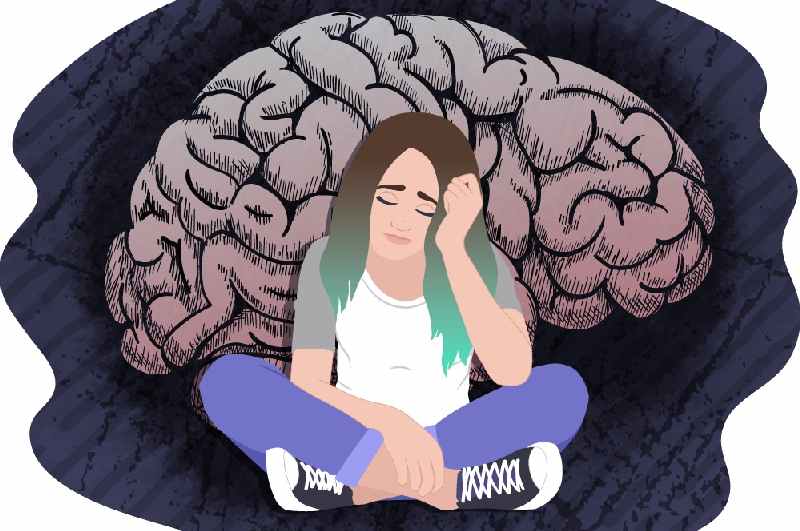
WASHINGTON DC, (ANI): Although there are therapies for depression, many people occasionally find these treatments unhelpful. In addition, women are more prone than men to experience depression, albeit there is no established reason for this difference.
This occasionally makes treating their diseases more difficult. This month, a study’s results were published in the journal Biological Psychiatry.
Researchers from the University of California, Davis collaborated with scholars from Princeton University, Mount Sinai Hospital, and Laval University, Quebec, in an effort to comprehend how the nucleus accumbens, a particular region of the brain, is impacted during the depression.
Depression has an impact on the nucleus accumbens, which is crucial for motivation, reaction to pleasurable experiences, and social connections. Previous studies in the nucleus accumbens revealed that whereas men with depression did not have any of these genes turned on or off, women did. These alterations may have contributed to depressive symptoms, or conversely, being depressed itself may have altered the brain. The researchers examined mice that had been exposed to unfavourable social interactions, which are more likely to cause depression-related behaviour in females than males.
“Understanding the long-lasting consequences of stress on the brain is made much easier because to these high-throughput analyses. Negative social interactions altered the gene expression patterns of female mice in our mouse model, and these patterns resembled those seen in depressed women,” UC Davis recent graduate and PhD researcher Alexia Williams, who developed and oversaw these studies, said.
This discovery enabled me to concentrate my attention on the relevance of these statistics for women’s health, which is interesting because women are understudied in this sector, she claimed. According to the study, RGS2 is a significant modulator of depressive-related behaviour in the nucleus accumbens following comparative transcriptional studies.
Researchers chose one gene, known as RGS2, to tweak after discovering similar chemical alterations in the brains of mice and humans. This gene affects the production of a protein that regulates the neurotransmitter receptors that Prozac and Zoloft and other antidepressants target. According to Brian Trainor, a psychology professor at UC Davis and the study’s senior author, “less stable versions of the Rgs2 protein are associated with increased risk of depression in humans, so we were curious to see whether increasing Rgs2 in the nucleus accumbens could reduce depression-related behaviours.”
At UC Davis, he also serves as an affiliated faculty member of the Center for Neuroscience and is the lab’s director. The effects of stress on these female mice were successfully reversed by the researchers when they experimentally increased Rgs2 protein in the nucleus accumbens of the mice. They noted that social approach and preferences for preferred foods increased to levels seen in females who did not experience any stress.
“These findings point to a biological mechanism responsible for the common motivational deficit in depressed patients. Rgs2’s reduced function has been linked to symptoms that are challenging to address in people with mental diseases “said Williams. The researchers suggested that results from fundamental science studies like this one could direct the creation of pharmacotherapies to successfully treat people with depression.
Williams stated, “Our aim is that by conducting research like these, which concentrate on clarifying processes underlying particular symptoms of complicated mental diseases, we will get science closer to creating novel treatments for those in need. (ANI)
Science
Newly discovered chemical gets reluctant seeds to sprout
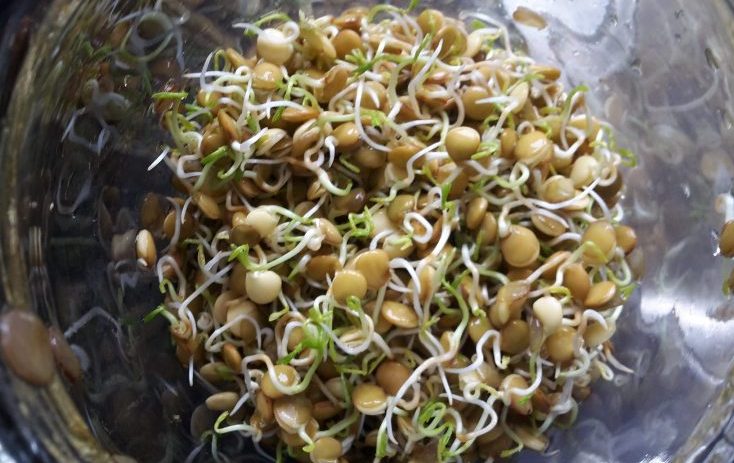
Washington DC, (ANI): Seeds that would otherwise lie dormant will spring to life with the aid of a new chemical discovered by a UC Riverside-led team. These findings by the research team have been published in the Proceedings of the National Academy of Sciences.
Plants have the ability to perceive drought. When they do, they emit a hormone that helps them hold on to water. This same hormone, ABA, sends a message to seeds that it isn’t a good time to germinate, leading to lower crop yields and less food in places where it’s hot — an increasingly long list as a result of climate change.
“If you block ABA, you mess with the chemical pathway that plants use to prevent seed germination,” said Aditya Vaidya, UCR project scientist and study author. “Our new chemical, Antabactin, does exactly this. If we apply it, we have shown that dormant seeds will sprout.”
Demonstrations of Antabactin’s effectiveness are described in the new paper. This work builds on the same team’s creation of a chemical that mimics the effects of the ABA hormone, produced by plants in response to drought stress.
That chemical, Opabactin, slows a plant’s growth so it conserves water and doesn’t wilt. It works by inducing plants to close tiny pores in their leaves and stems, which prevents water from escaping.
Next, the team wanted to find a molecule that would have the opposite effect, opening the pores, encouraging germination and increasing plant growth. Though seed dormancy has largely been removed through breeding, it is still a problem in some crops like lettuce.
Sean Cutler, a UCR plant cell biology professor and study co-author, said accelerating and slowing plant growth are important tools for farmers. “Our research is all about managing both of these needs,” he said.
To find Opabactin’s opposite, Vaidya quickly made 4,000 derivatives of it. “He found a needle in the chemical haystack,” Cutler said, “The compound he created blocks receptors to ABA, and is unusually potent.”
In their paper, the team members showed that applying Antabactin to barley and tomato seeds accelerated germination. Conceivably, both Antabactin and Opabactin could work together to help crops flourish in a world becoming drier and hotter.
Once Antabactin has helped seeds sprout into healthy plants, a farmer might start saving water early in the growing season by spraying Opabactin. This way, enough water is “banked” for when the plants start flowering.
“Just like a woman requires higher levels of nutrition during pregnancy, plants require more water and nutrition when they’re flowering and about to bear fruits,” Vaidya said. “This is true for most crops, especially for economically relevant crops like corn and wheat.”
The research team continues to investigate variations in seed dormancy induced by ABA in a variety of other plant species. They also want to examine Antabactin’s use as a chemical tool to increase plant growth in greenhouse settings where water isn’t limited.
“We hope to identify key molecular players that govern seed dormancy, ultimately reducing the impact of lost crop yields due to unfortunately timed plantings or poor seed germination,” Vaidya said. (ANI)
Science
CO2 Levels In The Atmosphere Are 50 Percent Higher Than Those In The 18th Century
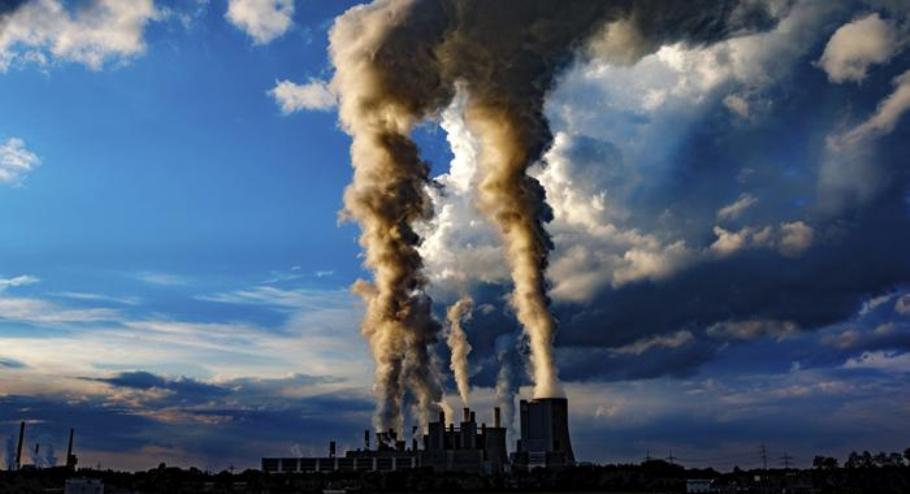
London: Carbon dioxide levels in the atmosphere will this year reach levels 50 percent higher than before the industrial revolution because of manmade emissions, Britain’s Met Office predicted on Friday.
It forecasted the annual average CO2 concentration measured at the Mauna Loa Observatory in Hawaii in 2021 will be around 2.29 parts per million (ppm) higher than in 2020.
It said CO2 concentrations will exceed 417 ppm at some point between April and June — 50 percent higher than the 278 ppm present in the late 18th century when the industrial era kicked off.
This is despite an unprecedented fall in greenhouse gas emissions in 2020 because of the pandemic.
“Since CO2 stays in the atmosphere for a very long time, each year’s emissions add to those from previous years and cause the amount of CO2 in the atmosphere to keep increasing,” said Richard Betts, lead producer of the Met Office’s annual CO2 forecast.
“Although the Covid-19 pandemic meant that less CO2 was emitted worldwide in 2020 than in previous years, that still added to the ongoing build up in the atmosphere.”
Mauna Loa has been continuously monitoring atmospheric CO2 levels — which fluctuate according to season but continue to climb annually — since 1958.
The United Nations says emissions from energy, food production, transport and industry must fall more than seven percent every year throughout the next decade in order to keep the temperature goals of the Paris climate deal in play.
The 2015 accord enjoins nations to limiting global warming to “well below” two degrees Celsius (3.6 Fahrenheit) above pre-industrial levels, and to 1.5C if at all possible.
With just over 1C of warming so far, Earth is already beset by extreme weather events such as flooding, droughts and tropical storms supercharged by rising sea-levels.
The Met Office said it took around 200 years for CO2 concentrations to increase 25 percent since the industrial era began.
“But now just 30 years later we are approaching a 50 percent increase,” said Betts. “Reversing this trend and slowing the atmospheric CO2 rise will need global emissions to reduce, and bringing them to a halt will need global emissions to be brought down to net zero.”
Source: AGENCE FRANCE-PRESSE
Science
OMG! Giant Ancient Sharks Had Huge Babies That Ate Siblings in the Womb
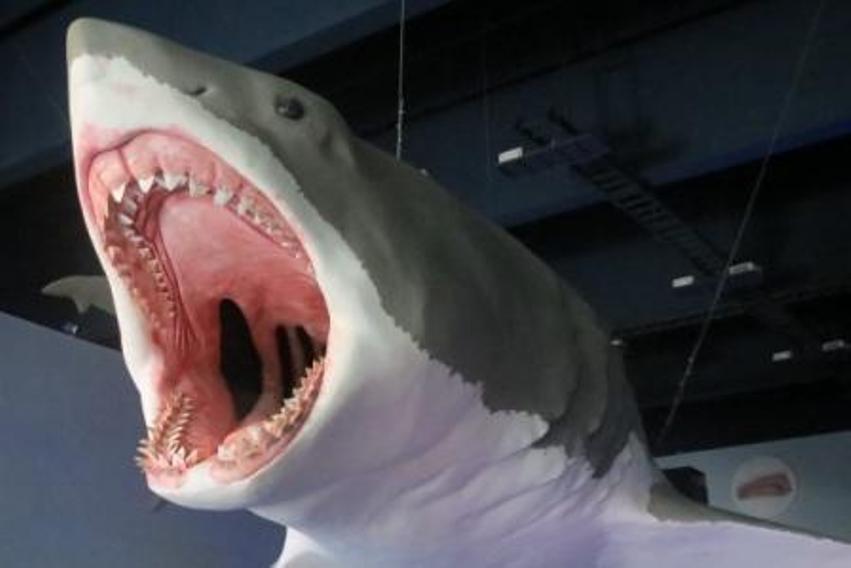
Made famous by the 2018 blockbuster The Meg, the largest predatory shark ever discovered, the megalodon, is a bit of a mystery. We know it lived between 15 and 3.6 million years ago and it reached at least 14 metres in length, more than double the size of an adult great white. But learning any more about the giant shark requires a bit of detective work.
Because of its soft cartilaginous skeleton, only a few parts of the shark’s body are mineralised and preserved, including its teeth, skull and spine. This means the fossil record is very poor for this animal. Unsurprisingly, the predator’s 17 cm teeth have received a lot of attention from researchers. But in a newly published study, Professor Kenshu Shimada of DePaul University and colleagues sought clues elsewhere.
By examining the spine of the now-extinct megalodon, the team found it gave live birth to babies two metres long, larger than an average adult human. Exactly how the babies got so big was likely down to cannibalism, eating their unhatched siblings in the womb.
Secrets in the spine
Like humans, sharks have a spine made up of lots components called vertebra, which grow as the animal gets older. The researchers measured the vertebra of a megalodon from the Miocene epoch, which lasted from five to 23 million years ago.
By comparing it to modern great white sharks, the team estimated that the megalodon it came from was around nine metres long when it was alive, but they didn’t stop there. Sharks deposit rings of hard tissue on their vertebra each year, and like the trunk of a tree these can be used to estimate age.
To count these rings inside the scientists would have had to cut through the fossil, damaging it forever. The solution was to use detailed X-ray scanning to study the internal structures, without causing any harm to the priceless specimen, revealing this shark died when it was 46 years old.
Looking down through the layers, the team could see how large this vertebra was when the shark was born. Astonishingly, the size estimate at the first growth ring imply the shark was two metres when born, meaning it was larger than an average adult human at birth.
Some sharks lay eggs, while others give birth to live young. In most sharks, however, the eggs hatch inside the mother, where the young feed on the egg yolk and fluids that she secretes until they are born fully formed.
The enormous birth size estimate for this particular megalodon provides strong evidence that this species had the same reproductive mode, with a great deal of investment in a smaller number of huge offspring. The dark secret of the megalodon is that to achieve this size in the uterus, the developing young must have been eating a lot.
Eating their siblings
It is very likely, this new study argues, that the babies’ growth was fuelled by cannibalism of their unhatched siblings, a sinister conveyor belt of high protein snacks for hungry pups.
It is unknown exactly how many megalodon embryos were produced. In basking sharks today, millions of eggs are created and sent to be fertilised. The hatched embryos begin to eat the surrounding eggs and in some cases, like the sand tiger shark, they eat other embryos too. Sharks can hold one or more pups in each of their two uteri, so it is likely at least two megalodons were born at a time.
This grim survival mechanism is not unique. All living sharks of the lamniform order, a group which includes great white, mako, and thresher sharks, use this strategy, which has existed for at least 70 million years.
This study also conservatively estimates the life expectancy of the species at 88-100 years old, using their spine data and well-established growth patterns of the teeth. This is in line with estimated ages for great white and whale sharks, only falling short of the record-breaking 500-year-old Greenland sharks, known to live life in the slow lane of cold northern seas.
It seems the start of a megalodon’s life was a tale of two halves. They were protected by a wonderful mother sacrificing time and energy to her pups, while they wrought havoc in the womb.
The Conversation
Tom Fletcher, honorary research fellow in Palaeobiology, University of Leicester.
This article is republished from The Conversation under a Creative Commons license.
Sourced From: The Wire
Science
New photos reveal massive canyon on Mars, the largest in the solar system

San Francisco: Arizona’s Grand Canyon may be awe-inspiring, but it’s just “a scratch” compared to the massive Valles Marineris Canyon on Mars.
Slicing along the Martian equator for about 2,500 miles, the canyon would reach from New York City to San Francisco if placed in the United States, according to NASA. The canyon floor sinks 7 miles into the surrounding plains. That is as deep as some of the deepest parts of Earth’s ocean.
It’s the largest canyon in the solar system, and new images from the Mars Reconnaissance Orbiter reveal details about its colossal size.
The photos were taken using the HiRISE (High Resolution Imaging Science Experiment), the most powerful camera ever sent to another planet. It’s one of six instruments onboard the Mars Reconnaissance Orbiter, the University of Arizona said.
Despite some truly breathtaking images of Valles Marineris, scientists still aren’t sure how the gargantuan canyon complex formed, according to LiveScience.
“Unlike Earth’s Grand Canyon, Valles Marineris probably wasn’t carved out by billions of years of rushing water; the Red Planet is too hot and dry to have ever accommodated a river large enough to slash through the crust like that,” LiveScience said.
A large portion of the canyon probably cracked open billions of years ago, the European Space Agency said, when a nearby group of volcanoes known as the Tharsis region was first thrusting out of the Martian soil.
“As the Tharsis bulge swelled with magma during the planet’s first billion years, the surrounding crust was stretched, ripping apart and eventually collapsing into the gigantic troughs of Valles Marineris,” the space agency said.
The Tharsis bulge is home to Olympus Mons, the largest volcano in the solar system, the Science Times reported.
Further analysis of high-resolution photos like these will help solve the puzzling origin story of the solar system’s grandest canyon, according to LiveScience.
Science
China’s Tianwen-1 may enter Mars’ orbit next month
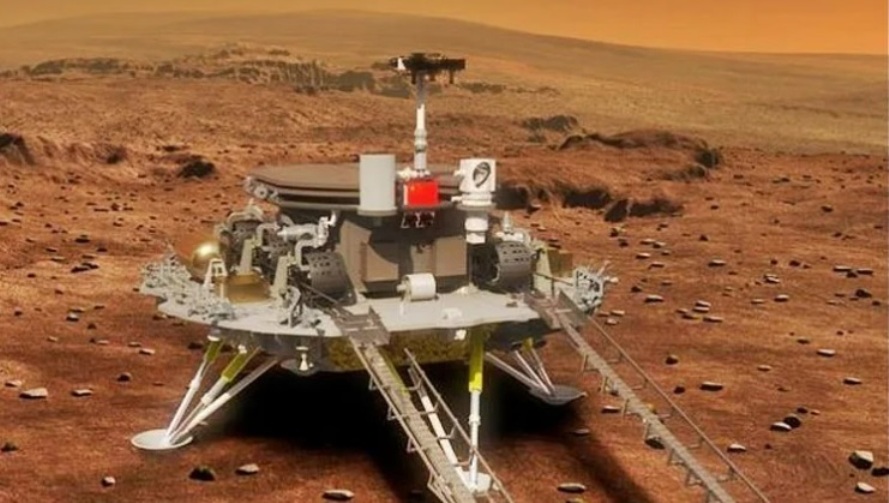
Beijing: The China National Space Administration (CNSA) announced on Sunday that the country’s Mars probe Tianwen-1 has travelled more than 400 million km and is expected to enter the Red Planet’s orbit next month.
As of 6 a.m. on Sunday, the probe had flown in space for 163 days and was about 130 million km from Earth and about 8.3 million km from Mars, reports Xinhua news agency. According to the CNSA, the probe is functioning stably and is scheduled to slow down before entering Mars orbit in more than a month and preparing itself to land on the Red Planet.
Since its launch on July 23, 2020, the Mars probe has captured an image showing both Earth and the Moon, as well as taking several selfies. It has carried out three orbital corrections, a deep-space manoeuver and self-checks on multiple payloads.
The Tianwen-1 probe, weighing about five tonnes, consists of an orbiter, a lander and a rover. It is designed to complete orbiting, landing and roving in one mission. After entering the Mars orbit, it will spend two to three months surveying potential landing sites, using a high-resolution camera to prepare for the landing in May.
The most challenging part of the mission will be the soft landing, an autonomous process of the probe lasting seven to eight minutes, according to the CNSA. The probe will use its aerodynamic shape, parachute and retrorocket to decelerate and buffer legs to touch down.
After the landing, the rover will be released to conduct scientific exploration with an expected lifespan of at least 90 Martian days (about three months on Earth), and the orbiter, with a design life of one Martian year (about 687 days on Earth), will relay communications for the rover while conducting its own scientific detection.
Tianwen-1 means ‘Questions to Heaven’ and comes from a poem written by Qu Yuan (about 340-278 BC), one of the greatest poets of ancient China.
Science
Five Asteroids Set To Fly Past Close To Earth – Two Of Them Bigger Than Eiffel Tower
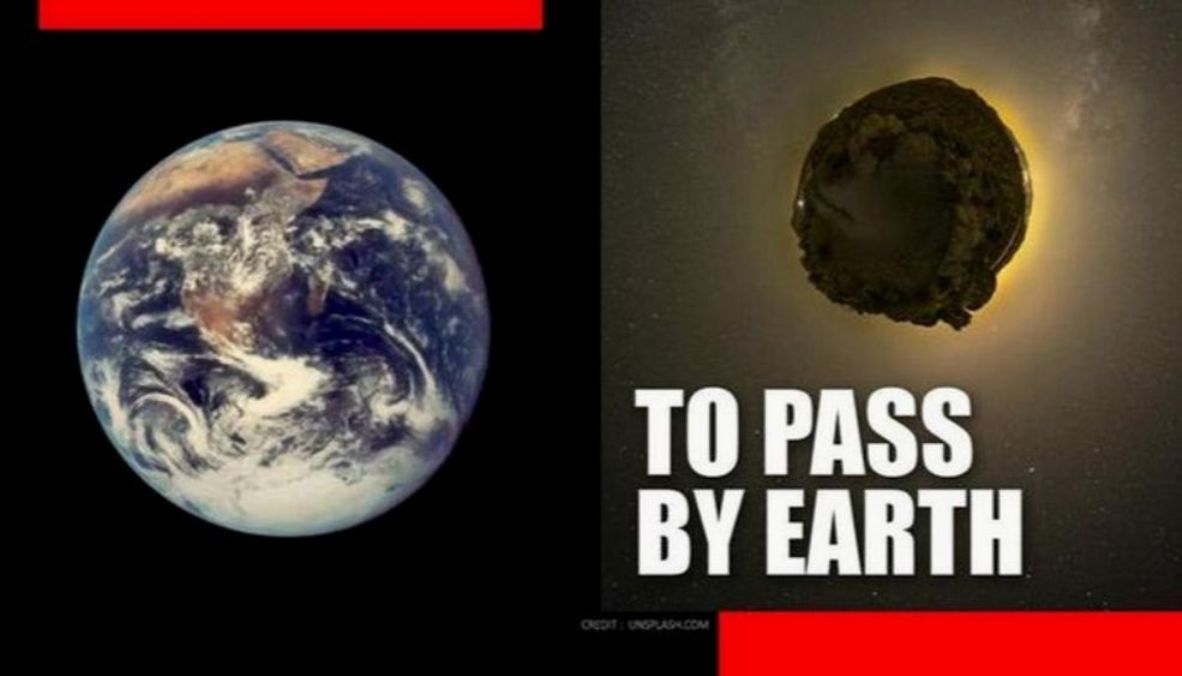
Washington: It’s a new year, but the life-ending threats facing the planet are still the same. Five asteroids are set to make a close approach to Earth on January 6, according to the Central for Near-Earth Object Studies (CNEOS).
Three of the asteroids are relatively small and pose a smaller threat to the planet if they were headed straight for it. However, the other two are bigger than the Eiffel Tower.
The bigger of the two, 2008 AF4, is nearly half a kilometre wide. If it were to crash into the planet, the resulting impact would be the equivalent of 25 megatons to 50 megatons, the same as the largest nuclear bombs in existence today.
While size certainly matters when it comes to determining whether or not an asteroid poses an imminent threat, it’s speed can greatly alter the level of risk.
All it would take is an asteroid that’s as big as a house travelling at 48,000 kilometres per hour to release as much energy as the Hiroshima bomb blast.
This means that even though Asteroid 2021 AJ is the smallest among those set to zoom by Earth on January 6, it’s still fast enough to obliterate an entire city if its trajectory changes.
According to the National Aeronautics and Space Administration (NASA), none of these asteroids — big or small — are an immediate threat.
They are being tracked because they’re either closer to Earth than 7.5 million kilometres, which is 19.5 times the distance between the Earth and the Moon, or because they’re bigger than 150 metres.


























